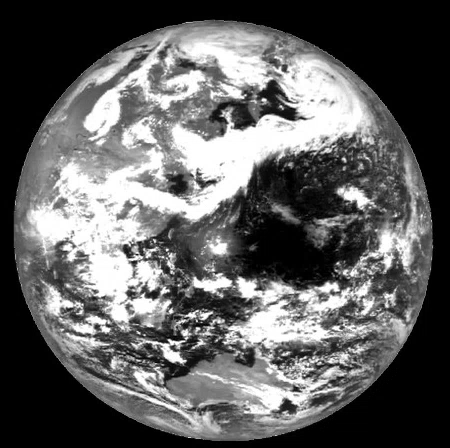How Chandrayaan 1 viewed a solar eclipse from the Moon
Behind the scenes of India’s first lunar mission.
Srinivasa Hegde, the Mission Director of India’s first planetary mission Chandrayaan 1, shares the story of how the spacecraft captured a solar eclipse from the Moon despite losing two star sensors.
10 years ago today, ISRO launched Chandrayaan-1, India’s first lunar orbiter. Today, we present a quick look at how Chandrayaan-1 managed to view a solar eclipse, a first for a lunar mission.
When the spacecraft managed to image the solar eclipse of July 22, 2009, it was not in its nominal state. In April 2009, one of the two star sensors onboard Chandrayaan-1 had failed. Shortly after, the exposure to extreme solar radiation combined with other factors caused the backup star sensor to fail too.
With the loss of both the star sensors, the spacecraft lost the ability to precisely point to a desired attitude in space. A mission failure was looming.
Instead of losing the craft, ISRO came up with a solution that involved using the Sun sensors to get knowledge of two spatial axes and get aid from the ground station to know the third. This data was utilized by the onboard gyroscopes to be able to point the spacecraft again with reasonable accuracy. The mission was back up and running.
However, the use of this method came with its time restrictions. For instance, it could not be used during a New Moon/Full Moon due to lack of a separation angle between Earth and Sun. On the other end of the spectrum, the angle between Earth and Sun was restricted to 25° to allow reasonable accuracy in pointing, and thus in spacecraft operations.
While limited in scope, this method proved reliable enough to work for a full six months after the failure of the critical star sensors.
It is under such conditions that the century’s longest solar eclipse was seen by Chandrayaan-1. The spacecraft was at a convenient vantage point (the Moon!) to image the totality shadow cast on Earth. The only problem? Accurate pointing would be required which the above-mentioned method would not provide, given the New Moon geometry.
Another solution was devised. The Terrain Mapping Camera that would be used to image the Earth during the eclipse, had a Field of View (FOV) of 11°. The spacecraft was thus made to pitch at a small rate to scan the Earth between +/- 10°. To account for the error in the antenna pointing mechanism, a roll of +/- 3° was also introduced.

The resulting motion and pointing of the spacecraft ensured that the totality shadow could be viewed at points within the pointing range of the spacecraft.
During the eclipse however, if the spacecraft downlinks to connect to the ground station, it would introduce uncertainty in executing real-time commands, and may miss capturing the shadow. Hence, all the operations during the eclipse period were planned and executed through time-tagged commands apriori.
And there it was! Chandrayaan-1 saw the totality shadow of the century’s longest solar eclipse, from the Moon!

What a beautiful view.
→ Browse the Blog | About | Donate ♡
